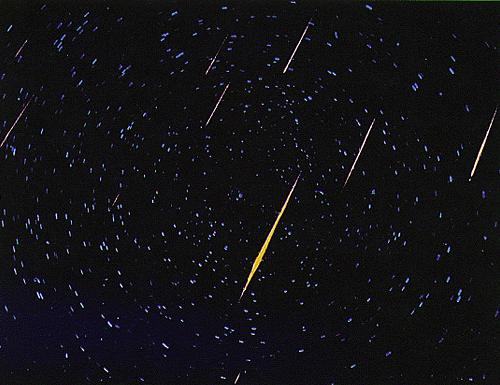The Ganymedes of March and the Camelopardalids will reach their peak together on the evening of March 22 * All that is required is to go out at dusk to a place far from the city lights

For news about the 2009 Perseid shower
Today, Sunday, the 22nd, two meteors will pierce the night sky at the same time - the Camelopardalids and the Ganymedes of Mars. These meters will be well visible in all time zones, in the early evening hours after sunset.
The Camelopardalids shower has no definite peak, and falls over many days at a rate of one meteor per hour. However, they are also extremely slow. Their pace is only seven kilometers per second. Historically, their peak came on March 22. Any bright meteor seen will almost certainly belong to the Camelopardalids, provided it comes from the north.
So far the asteroid or comet from which the meteors came has not been found. The comet must cross the Earth's orbit in relatively short periods of time, says Y.V. Oberobov. There are about ten candidates: two comets Schwazmann-Wachmann-3 and Pons-Winkeek as well as four known asteroids: , 1984 KD (3671), 4788 PL, 1987 SJ3, 1987 PA, as well as Amor (1221), Selbeck (3288) and more.
Amor 1221 is a blanket name for a group of near-Earth asteroids orbiting the Sun between Earth and Mars. Amor-type asteroids sometimes cross the orbit of Mars but not the Earth's orbit, however on March 12, 1932, Belgian astronomer Eugene Delaport photographed asteroid Amor approaching to a distance of about 16 million kilometers (40 times the distance of the moon). It was the first time an asteroid was observed so close to Earth and led to the beginning of the warning movement against this danger.
3288 Salbeck is also an asteroid crossing the orbits of the planets. According to Obrovov's research, there are 22 meteorite streams from objects with a cycle period of less than six years that are responsible for 104 meteorites, of which 72 have been confirmed by photography or radar.
Camelopardalids have a twin meter – Gamma Orgidis, said Oberobov. "It can therefore be estimated that they are the remains of hundreds of parent bodies that are responsible for two meteorites. The existence of small complex bodies again raises the question of the simultaneous existence of active comets that broke up and created meteor streams and perhaps even the asteroids Apollo, Amor and Athena.
The Ganymede, on the other hand, are much better known. They were first documented in 1973, and confirmed in 1975. Their rate of fall reaches 40 per hour, but they are faster and therefore increase the chance of an average observer to notice them as a shooting star. Like the Camellias, the Geminids of Mars are also slower than average.

2 תגובות
Thanks. I fixed it
Their peak has arrived -> has arrived
It was the first time an asteroid -> it was the first time an asteroid